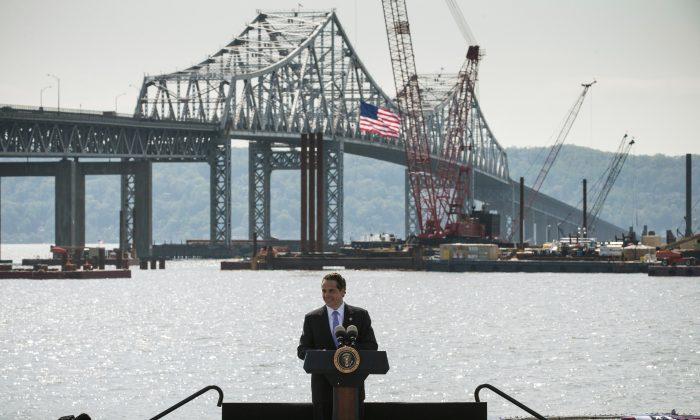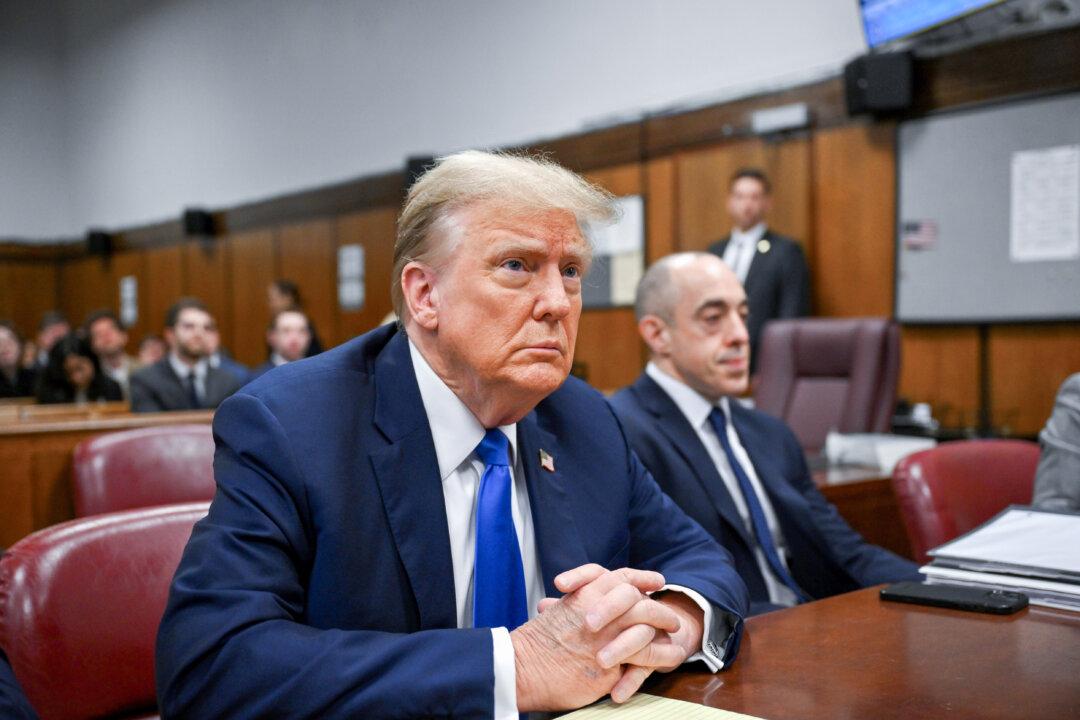The multibillion-dollar Tappan Zee Bridge replacement project is set to receive a low-interest loan of $511 million in federal money via the Clean Water State Revolving Fund (CWSRF), administered by the Environmental Facilities Corporation (EFC).
This project is the first of its kind to receive CWSRF money, and EFC board members lauded the move as a “new and important category of funding.” The board unanimously approved the loan Thursday, but it still needs approval from the Thruway Authority and Public Authorities Control Board.
Criticism
The approval comes amid criticism and questioning from an array of groups, from environmental and transportation advocates, to state officials, to the regional Environmental Protection Agency office. Gov. Andrew Cuomo, who is up for re-election this year, has been pushing the project forward while being criticized for lack of transparency.
While the loan does not directly fund the construction of the roadway of the bridge, it will contribute to work like dredging and removal of the existing bridge. This is work that, like other projects the CWSRF loans to, mitigates negative environmental impacts, EFC said.
Critics said the money should only be given for water infrastructure and sewage treatment, as it historically has, and raised concerns this leaves less money for localities to use on clean water projects. Habitat restoration/preservation projects are also eligible for CWSRF loans in national estuary program areas.
EFC said this loan comes from leftover money totaling around $1 billion, and it is certain the localities it has approached will not need more than what remains after setting $511 million of it aside for the bridge replacement project.
In fact, despite lowering the application requirements for the loans a year ago and making more aggressive outreach efforts, municipalities have not come close to applying for all the funds. EFC expects to finance 100 other wastewater infrastructure and drinking water projects by the end of the fiscal year with about $500 million left over.
“We can’t force people to take our money,” said Michael Driscoll, EFC president, at the board meeting. “They have to take a loan ... they’re choosing not to borrow money because they have to pay it back.”
The loan will go toward:
• Restoration of Piermont Marsh
• Oyster bed restoration
• River bottom armoring
• Storm water treatment at landings
• Underwater noise protection (bubble curtains) during pile driving
• Dredging and mound removal
• Dredge material disposal
• Removal of the existing bridge
• Shared use path for pedestrians and bicycles
• Endangered peregrine falcon nest box relocation
• Net conservation benefit plan (Atlantic sturgeon)
• Channel restoration of Gay’s Point






Friends Read Free